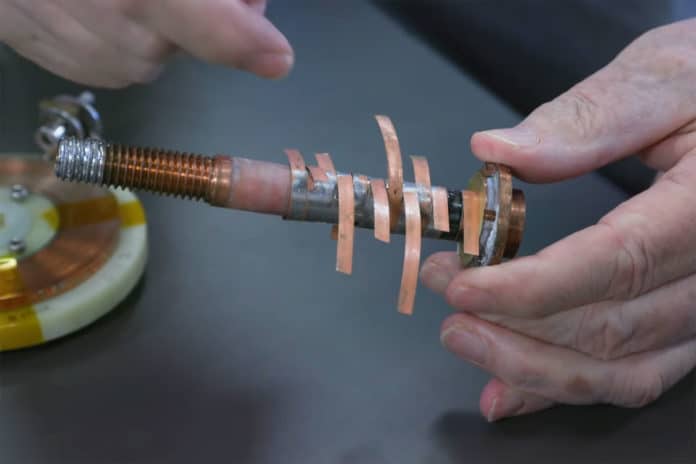Researchers at the Florida State University-based National High Magnetic Field Laboratory have created a toilet paper roll-sized magnet which is less than a centimeter thick that resets the bar on what’s possible in direct current magnetic fields, exceeding the previous limit by half a tesla.
This miniature electromagnet created by MagLab engineer Seungyong Hahn and his team generated a world-record 45.5-tesla magnetic field, which is more than 20 times the strength of a hospital MRI magnet. A typical hospital MRI magnet is about 2 or 3 teslas.
MagLab already houses the world’s strongest continuous magnet, 45-tesla hybrid which combines a superconducting magnet of 11.5 teslas with a resistive magnet of 33.5 teslas. The team’s new research doesn’t seem like a huge jump, but it paves the way for even stronger magnets based on the principles of superconductivity.
The magnet’s superconductors were made out of a new compound called REBCO (rare earth barium copper oxide), which can carry twice as much current as a same-sized section of niobium-based superconductor in its sibling 45T hybrid magnet. This current density is crucial – after all, the electricity running through an electromagnet generates its field, so the more you can cram in, the stronger the field.
It weighs only 390 grams (about 0.86 pounds) and looks a little like a short stack of flat discs wrapped in thin metal strips.
Today’s electromagnets contain insulation between conducting layers, which directs the current along the most efficient path. But it also adds weight and bulk. But Hahn’s invention is a superconducting magnet without insulation. In addition to yielding a sleeker instrument, this design protects the magnet from a malfunction known as a quench.
Quenches can occur when damage or imperfections in the conductor block the current from its designated path, causing the material to heat up and lose its superconducting properties. But if there is no insulation, that current simply follows a different path, averting a quench.
“The fact that the turns of the coil are not insulated from each other means that they can share current very easily and effectively in order to bypass any of these obstacles,” said David Larbalestier, co-author of the paper.
Such intense magnetic fields are generally most useful for basic science applications, such as trying to understand the properties of new materials, and in a diverse range of fields, from medical diagnostics to particle physics research.
Also, the team has big hopes for this technology. “This is indeed a miniaturization milestone that could potentially do for magnets what silicon has done for electronics,” MagLab Director Greg Boebinger said in a statement. “This creative technology could lead to small magnets that do big jobs in places like particle detectors, nuclear fusion reactors, and diagnostic tools in medicine.”
Their work is outlined in an article published in the journal Nature on 12 June.
